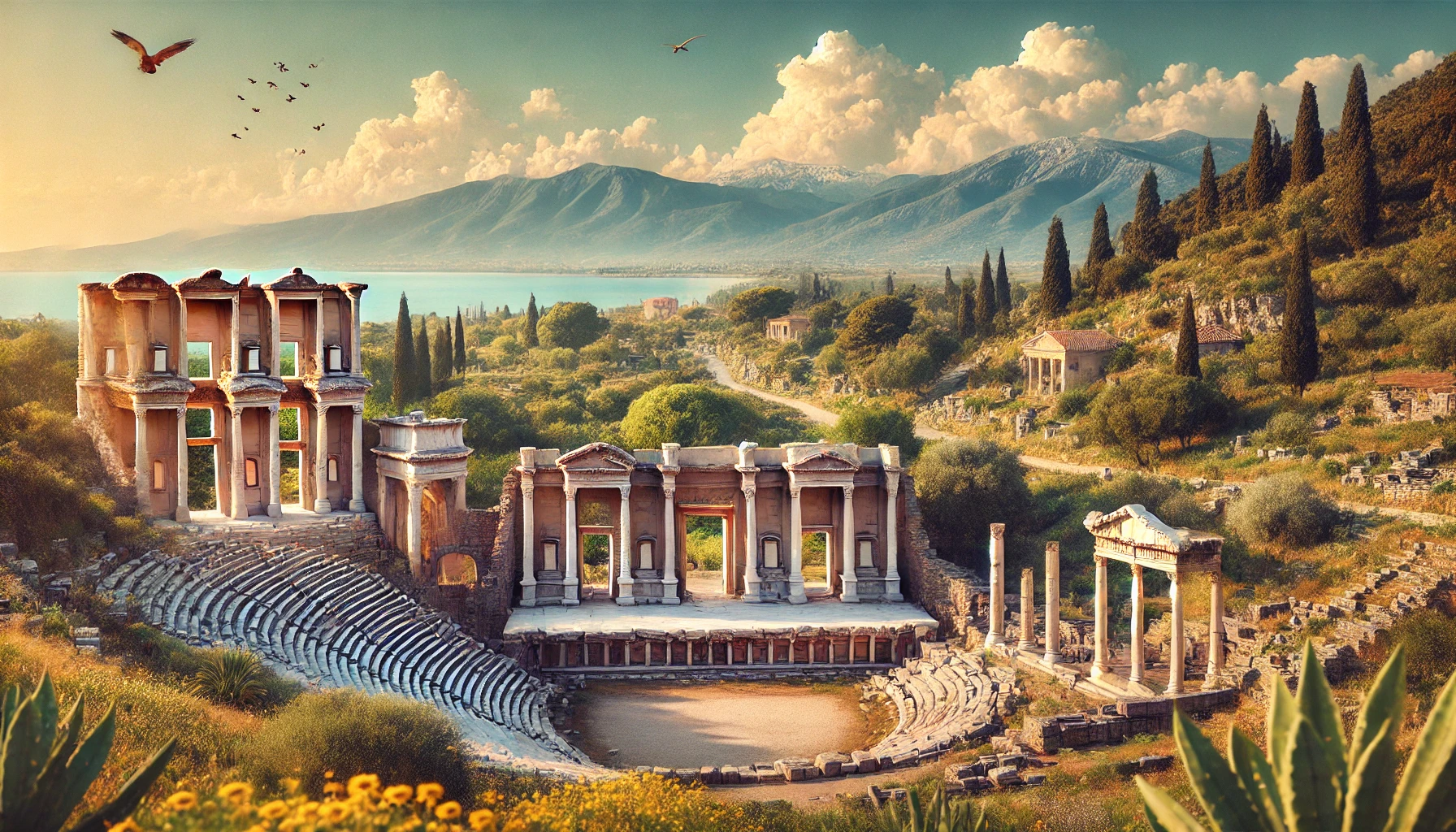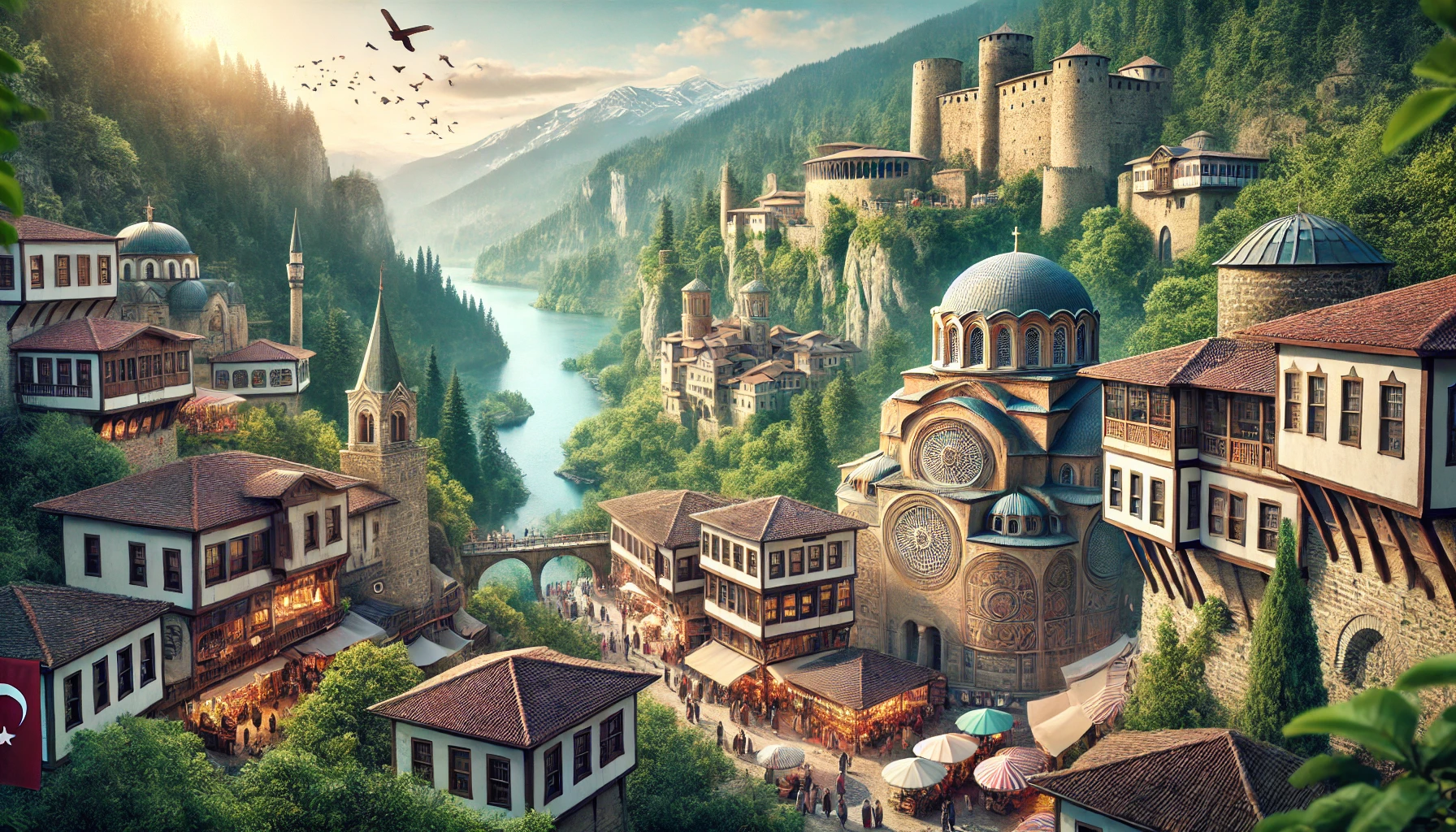Exploring Miletus: The Ancient Ionian Metropolis
Miletus, an ancient Greek city located near the modern town of Soke in Aydin province, Turkey, is a treasure trove of history and culture. Known for its significant role in the Ionian League and its impressive ruins, Miletus offers visitors a glimpse into the grandeur of ancient civilizations. This article will take you on a journey through the fascinating history, key attractions, and enduring legacy of Miletus, providing a comprehensive guide for travel enthusiasts.
A Glimpse into Miletus’ History
Early Beginnings and Independence
Miletus was one of the most prominent cities of the Ionian League, a confederation of Greek city-states on the coast of Asia Minor. It gained independence in 38 BC with the assistance of Roman emperors, allowing it to grow into a major metropolis. The city’s strategic location as a harbor facilitated trade and cultural exchange, contributing to its prosperity and influence.
The Harbor City
Originally, Miletus was a thriving harbor city. However, over time, the Büyük Menderes River (Meander River) deposited large amounts of alluvial soil, shifting the coastline and transforming Miletus into an inland city. Despite this change, the city’s legacy as a vital maritime hub remains evident in its ruins.
Architectural and Historical Marvels
The Theatre of Miletus
One of the most impressive structures in Miletus is its ancient theatre. Built during the Hellenistic period and expanded under Roman rule, the theatre could accommodate up to 15,000 spectators. Its grand scale and well-preserved state make it a highlight for visitors.
Exploring the Theatre
Visitors can walk through the theatre’s seating areas, stand on the stage, and imagine the grand performances that once took place here. The panoramic views from the top tiers of the theatre are breathtaking, offering a unique perspective of the ancient city and its surroundings.
The Temple of Apollo Delphinios
The Temple of Apollo Delphinios was one of the main religious sites in Miletus. Dedicated to Apollo, the god of music, prophecy, and healing, this temple played a central role in the spiritual life of the city.
Architectural Significance
Though only the foundations and a few columns remain, the temple’s significance is undiminished. Visitors can explore the site and gain insight into the religious practices and architectural styles of ancient Miletus.
The Bouleuterion
The Bouleuterion, or council house, was the political heart of Miletus. This structure served as the meeting place for the city’s council, where important decisions and policies were debated and enacted.
Historical Importance
The well-preserved Bouleuterion offers a fascinating glimpse into the political life of Miletus. Visitors can sit in the council seats and envision the lively debates that once took place within its walls.
The Baths of Faustina
Named after Faustina, the wife of Roman Emperor Marcus Aurelius, the Baths of Faustina are another notable site in Miletus. These Roman baths were a place for relaxation, socialization, and hygiene.
Exploring the Baths
Visitors can explore the various rooms of the baths, including the frigidarium (cold room), tepidarium (warm room), and caldarium (hot room). The intricate mosaics and architectural details highlight the luxurious nature of Roman public baths.
The Natural Beauty Surrounding Miletus
The Meander River
The Büyük Menderes River, also known as the Meander River, played a crucial role in the history and development of Miletus. Although the river’s sediment deposits eventually transformed Miletus into an inland city, its presence remains a defining feature of the landscape.
Scenic Views
Visitors can enjoy scenic walks along the riverbanks, taking in the lush vegetation and tranquil atmosphere. The river’s meandering course through the region adds to the picturesque beauty of the area.
The Ancient Harbor
Although the harbor of Miletus is now inland, the site still holds historical significance. Visitors can explore the remnants of the harbor structures and imagine the bustling maritime activities that once defined the city.
A Window to the Past
The ancient harbor area provides a unique perspective on how Miletus interacted with other Mediterranean civilizations. It serves as a reminder of the city’s past glory as a major trade and cultural center.
Visiting Miletus: Practical Information
Getting There
Miletus is located near the town of Soke in Aydin province, approximately 100 kilometers from Izmir. The site is accessible by car, bus, and organized tours.
Transportation Options
Visitors can take a bus from Izmir or other nearby cities to Soke, followed by a short taxi ride to Miletus. For those driving, the site is well-signposted and has parking facilities.
Best Time to Visit
The best time to visit Miletus is during the spring (April to June) and autumn (September to November) when the weather is mild and pleasant. These seasons offer comfortable conditions for exploring the ruins and enjoying the natural surroundings.
Accommodation
While many visitors choose to stay in Izmir or nearby towns, Soke offers several accommodation options for those wishing to stay closer to Miletus.
Recommended Stays
Some popular options include local guesthouses and hotels in Soke, providing a comfortable base for exploring the ancient city and its surroundings.
Travel Tips
- Wear Comfortable Shoes: Exploring the ruins involves a lot of walking, so comfortable footwear is essential.
- Stay Hydrated: Carry water, especially during the hot summer months, to stay hydrated while exploring.
- Respect the Ruins: Be mindful of the historical significance of the ruins and avoid climbing or touching fragile structures.
Why Miletus is a Must-Visit Destination
Rich Historical Legacy
Miletus offers a deep dive into ancient history, with its well-preserved ruins and fascinating artifacts. The city’s role as a major center of trade, culture, and politics makes it a captivating destination for history enthusiasts.
Architectural Marvels
The impressive architectural remains, including the theatre, temple, bouleuterion, and baths, showcase the city’s rich cultural heritage. These structures provide a tangible connection to the past and highlight the architectural prowess of ancient civilizations.
Natural Beauty
The natural beauty surrounding Miletus, including the Meander River and the lush landscape, adds to the site’s appeal. Visitors can enjoy scenic views and a tranquil atmosphere, creating a serene and picturesque setting.
Conclusion: Discovering the Wonders of Miletus
Miletus, with its rich history, stunning ruins, and beautiful natural surroundings, is a hidden gem on Turkey’s Aegean coast. From the grand theatre and the Temple of Apollo Delphinios to the tranquil banks of the Meander River, Miletus offers a diverse range of experiences for travel enthusiasts. As you explore this ancient city and its surroundings, you’ll uncover the stories of a bygone era and create lasting memories.
Latest Update: Jul 20, 2024
Your Content Goes Here
TAGS: ancient city of Miletus, Baths of Faustina, Bouleuterion Miletus, historical sites in Turkey, Miletus, Miletus ruins, Miletus travel guide, Miletus Turkey, Temple of Apollo Delphinios, Theatre of Miletus, Turkey tourism
Welcome to Izmir
A brief summary of the key points in this article.
















